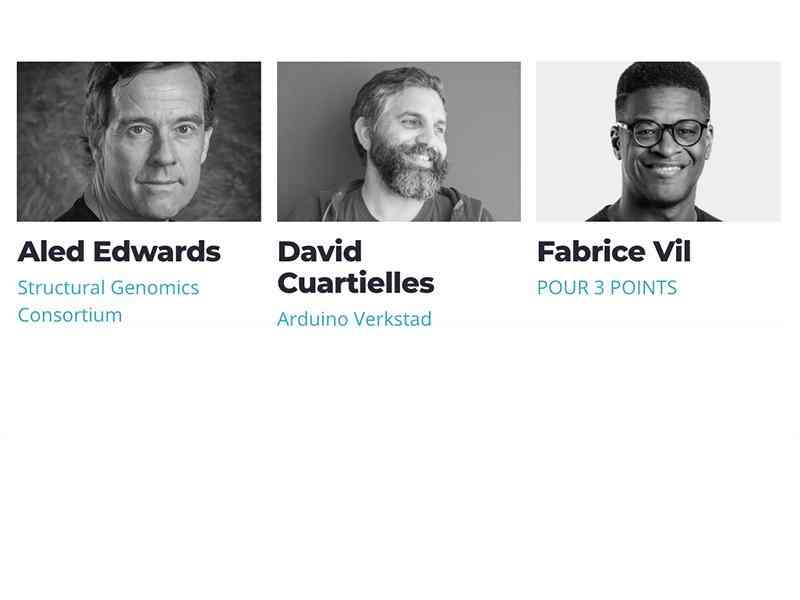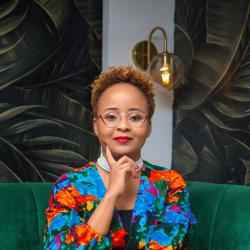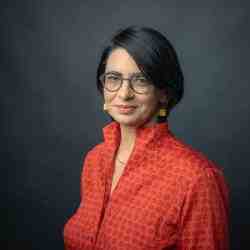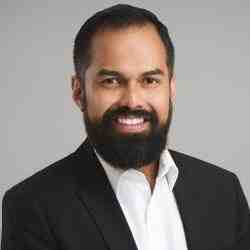Introduction
David Cuartielles is inspiring a generation of adolescents to better understand technology and problem solving by designing and implementing a new model and process that unskilled teachers can use to engage students in specific applications of technology to be more creative and address challenges in a society of constant change.
The New Idea
David makes learning technology part of a creative and problem solving process for children and teenagers, motivating them to use technology not as an end in itself, but as a tool to design solutions, reach outcomes and create change. This process provides thousands of young people with the opportunity to solve problems and see their ideas put to practice from a very young age.
Schools in Spain are obliged to have 3 hours of technology teaching a week. But most teachers don’t have the skills nor the knowledge to do so, often making their classes boring and uninspired, driving away students from this field. David has seen this problem as an opportunity and has developed a model that can be applied by un-skilled teachers to teach technology in a way that encourages creativity, teamwork and problem solving through a learning by doing process.
His model, Creative Technologies in the Classroom (CTC), provides teachers with the platform, tools, support and confidence to help young students acquire new skills and technical knowledge.
CTC is designed to simultaneously train teachers from 40 different schools to implement the methodology in their classrooms. This professional development is supported with an elaborate online forum to provide continued support, also creating a very powerful community of empowered teachers. Furthermore, each school is provided with a simple, affordable and open-source kit to use throughout the academic year. Teachers are also encouraged to work across the school curriculum with other STEM (Science, Technology, Engineering and Math) subjects to develop joint projects and objectives.
The Problem
Technology affects practically every aspect of our lives, only accelerating the rate of change of an already very fast-paced society. Children and adolescents must not only master technology – which in many cases they do – but learn how to use technology as a powerful educational and problem-solving tool. Yet there are some schools that are delaying this opportunity of using technology in the classroom as the valuable learning tool it is and of educating a generation of young, active and creative problem-solvers.
As part of the Spanish educational reform in 1995, the subject of technology was introduced in the academic curriculum, suddenly and with minimal training for teachers. These teachers, with no previous experience or knowledge on the matter, had to face the challenge of teaching a new subject, without the necessary support or infrastructure. The result was a heavily theoretical and boring subject, often demotivating young students to pursue scientific branches.
Meanwhile the technological subject field is an essential element in the current and future job market in most developed countries. STEM employment grew three times more than non-STEM employment in the past 5 years, and yet has very poor curricular content in Spain and is often taught in isolation, resulting in low acceptance by students. Although the Spanish public system mandates three hours per week of technology education in secondary schools, the time is poorly used and teachers are unprepared.
Newer concepts such as the “open-source” world, collaborative economy or indeed social entrepreneurship or changemaking are not included in the state curricular content. Teachers, specifically those related to the STEM world, vocationally want to improve their teaching and content for students but have neither the support nor the resources to do so.
Key among all challenges is the lack of adequate, ongoing professional development for teachers who are required to integrate new technologies into their classrooms yet who are unprepared or unable to understand. This results in lack of motivation from teachers, and new investments are left unused or applied through old processes.
The Strategy
David has created a model to change the way technology is taught in schools around the world by implementing a cost-effective and widespread roll-out strategy that empowers teachers and enthuses students to learn through technology.
David has succeeded in implementing his Creative Technology curriculum in over 450 schools in the past 3 years, in Spain, Sweden and Ecuador. This means that so far more than 13,000 adolescents have had the chance to practice new forms of creativity and problem solving.
David has taken his university-based teaching, specifically designed for technology in the creative world, and adapted it to secondary education. His experience has shown him that children and teenagers are not necessarily attracted to coding or algorithms but that experimenting with circuit boards – or any other open-source and easy-to-use hardware - to create tangible outcomes is hugely stimulating and motivating.
David implements his methodology through Verkstad, the company he founded around Arduino (a ground-breaking technology co-created by David), and offers teachers and schools an educational experience based on technology that can be adjusted from three months to a whole academic year.
The success of CTC is the tailor-made Arduino kit, an essential part of the hands-on process. These kits are economically accessible for schools (36€ per kit, and only one kit is needed per class) and are designed specifically to fit in the content of the training course allowing students (and teachers) to experiment and evaluate progress throughout each module. In fact, the interactive course is designed in such a way that students feel that, after each module, they have reached a milestone, increasing motivation throughout the process.
Each kit – which weighs about 10kg – includes documentation, software, access to an online platform for direct support for teachers, and the Arduino hardware. It allows to develop at least 26 different projects around gaming, robotics (basic electro mechanics), digitalization and communications.
His methodology is designed around teachers, and adapted to their needs. It is rolled out in 4 phases:
1. Teacher professional development: During the first 3 days teachers get familiar with all the elements of the kits, receive tutorials, quizzes, questions etc. and are encouraged to keep discovering and playing with the kit. Two weeks later the Verkstad team train the teachers for another 3 days, an opportunity not only to learn the hands-on aspects of the methodology, but also for the teachers to meet each other and start creating a network.
In fact, part of the project’s objective is to create a community of motivated technology teachers who work together, exchange experiences, push boundaries and build on the initial training.
Feedback from teachers has been tremendously positive (over 900 have participated in the past 3 years) and their enthusiasm has subsequently been key in setting up ad hoc initiatives such as the Display Day and/or regional competitions.
With this model, approximately 40 teachers can be trained in one session, and once trained, just one person from David’s team can provide support to approximately 1,000 schools, dramatically reducing costs and improving scalability of the project. In addition, all information and materials are available online, encouraging a self-learning approach to the methodology.
2. Learning areas: during 8 weeks students play and learn with Arduino to acquire programming, digital, analogue, robotics and communication skills. Each of these areas have their own specifically designed projects, and each team of students has to complete two projects per module. The process is structured in the following way: one day to acquire knowledge around the project; one day to build the project and one day to present the work and results to the rest of the class.
3. Final projects: CTC culminates with an-end-of year project for which teachers encourage their students to think about how their learning can be used to improve an issue in their own lives or community
The teachers work with the students to develop these projects in the 9 remaining weeks of the school year. Participants are given the confidence to work in teams and to apply different creative techniques including idea generation, brainstorming, challenging assumptions and lateral thinking to help them define and develop their team projects. In addition to the purely technological skills taught such as programming, electronics and mechanics, the courses encourage innovation, experimentation, teamwork and creativity.
4. Final Fair: End-of-year projects are presented at a special fair organized by teachers and for other students and parents to explore. More often, regional contests are organised where students and teachers get together to present their projects. These competitions also serve as collaborative evaluation systems. Over 3,000 projects have been presented, ranging from pendulums to alarm-clocks to simple robots – all with a scientific, electronic, engineering, artistic or mathematical background and specifically designed to solve a problem. Ultimately, the students experience changemaking at a very young age and become the creators of projects that can be the inspiration for future ground-breaking innovations.
David partners with local educational authorities and with key stakeholders such as the regional Education departments, well-established educational NGOs, such as Educaixa, or private companies, such as Intel or Telefonica that not only fund the methodology, but help select and interact with the schools. These key institutions are the gateways to generate change at large scale.
David’s goal is to reach 2,000 new schools every trimester, currently with the support of his partnerships with Intel. That would mean multiplying by 20 the number of schools and teachers who have applied CTC so far.
This methodology is also being adapted to different contexts and languages (aiming to include 2 new languages each trimester), and applied in schools in Sweden and Ecuador. Verkstad will soon be expanding to Colombia, Mexico and Panama, with representatives in each country to provide direct support to teachers and schools.
Furthermore, Verkstad has implemented training for social workers in Ecuador to apply the educational process with socially vulnerable communities. The ability to pull together technology, creativity and teamwork in a motivating method means that the CTC can be targeted at almost any interested party, and David is working to expand the mission to other technological areas such as robotics as well as other target communities.
The Person
Passionate about technology and education, David is dedicated to ensuring access equality to tools that can facilitate a collaborative learning experience.
David has dedicated most of his adult life to teaching. Affected by his mother’s inability to study medicine, as she would have liked, he is also very concerned about access to education for everybody regardless of background, social status or income. It was this obsession that inspired him to enter the world of open source hardware
David wanted to be an “inventor” since the age of 10, and years later became one of the co-creators of Arduino, one of the first open source hardware platforms. His background in engineering and education, and his vocation to ensure access to education for everybody regardless of their income and social standing, resulted in the creation of Arduino, pioneer in open source hardware. Arduino (open-source electronic prototyping platform for the production of interactive electronic objects) is the basis of David’s educational methodology, as it allows to experiment and create prototypes without need for professional knowledge or training, fostering the maker culture and community within the schools.
Arduino has become a global leading platform for DIY electronics and earned the team an Honorary Mention at the Ars Electronica Digital Community Prix 2006. For David, Arduino was born from the need to offer students a cost effective tool for them to learn. Arduino was launched at 25 USD when comparative technology at that time was around 1,000 USD, therefore revolutionising access to hardware experimentation.
David was trained in micro-electronic engineering, but today defines himself as an Education Designer. He is passionate about how education can be transformed through enabling children and young people to play and test engineering ideas in partnership with peers and experts.
He works to enable such learning to take place through various initiatives including the Fabriken (also known as FBRKN), a FabLab at STPLN in Malmö (which he directs), the Arduino community and his academic research at Malmö University (Sweden).
Since the late nineties he has developed robotic, mobile and net based interactive art installations and open source tools for live performance and education.

 Tile image
Tile image Tile image
Tile image


